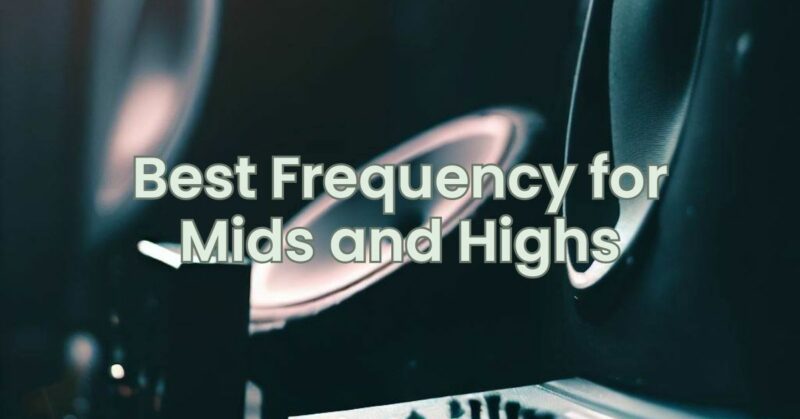Achieving optimal audio quality requires careful consideration of the frequency range for mids and highs, as these frequencies play a crucial role in defining the clarity, detail, and presence of sound. In this article, we will explore the concept of frequency range for mids and highs, discuss their importance in audio reproduction, and help you determine the best frequency range for achieving an enjoyable and balanced sound experience.
Understanding Frequency Range:
Frequency range refers to the span of frequencies that a particular audio component, such as a speaker or a driver, can effectively reproduce. In the context of mids and highs, it refers to the range of frequencies responsible for reproducing vocals, instruments, and other high-pitched sounds in music. While there is no universally defined frequency range for mids and highs, certain frequency ranges are commonly associated with these elements of audio reproduction.
Determining the Best Frequency Range:
- Vocal Clarity: Mids are crucial for reproducing vocals, which often reside in the frequency range of approximately 500 Hz to 2 kHz. This range allows for clear and intelligible vocal reproduction, ensuring that singers’ voices are accurately represented without sounding muddy or overly emphasized.
- Instrumental Detail: Highs encompass the frequency range above the mids, typically starting around 2 kHz and extending to higher frequencies. This range is responsible for reproducing the intricate details of musical instruments, such as the shimmer of cymbals, the strumming of guitars, or the delicate nuances of a piano. A well-defined and extended high-frequency response adds depth and realism to the overall audio presentation.
- Speaker Capabilities: The ideal frequency range for mids and highs may vary depending on the type and capabilities of the audio equipment, particularly the speakers or drivers being used. High-quality speakers with dedicated mid-range drivers and tweeters can effectively reproduce a wide range of frequencies with accuracy and clarity. It is essential to choose speakers that are designed to handle the desired frequency range without distortion or uneven response.
- Personal Preferences and Music Genre: The best frequency range for mids and highs can also be influenced by personal listening preferences and the type of music you enjoy. Some listeners prefer a more forward or emphasized mid-range, while others prioritize extended high-frequency response for a more detailed and airy sound. Additionally, different music genres have varying emphasis on mids and highs, so it’s worth considering the sonic characteristics of the music you typically listen to.
Selecting the best frequency range for mids and highs involves finding the balance between vocal clarity, instrumental detail, speaker capabilities, personal preferences, and the characteristics of the music you enjoy. A well-designed audio system with speakers capable of accurately reproducing the desired frequency range can greatly enhance your listening experience, allowing you to fully appreciate the richness and nuances of the music.
Keep in mind that audio preferences can be subjective, and experimentation may be necessary to find the perfect balance. Consulting with audio professionals or conducting thorough research on speaker specifications and frequency responses can provide valuable insights when determining the ideal frequency range for mids and highs in your audio setup. Ultimately, it’s about finding the sweet spot that delivers the most satisfying and immersive sound reproduction for your individual listening preferences.


